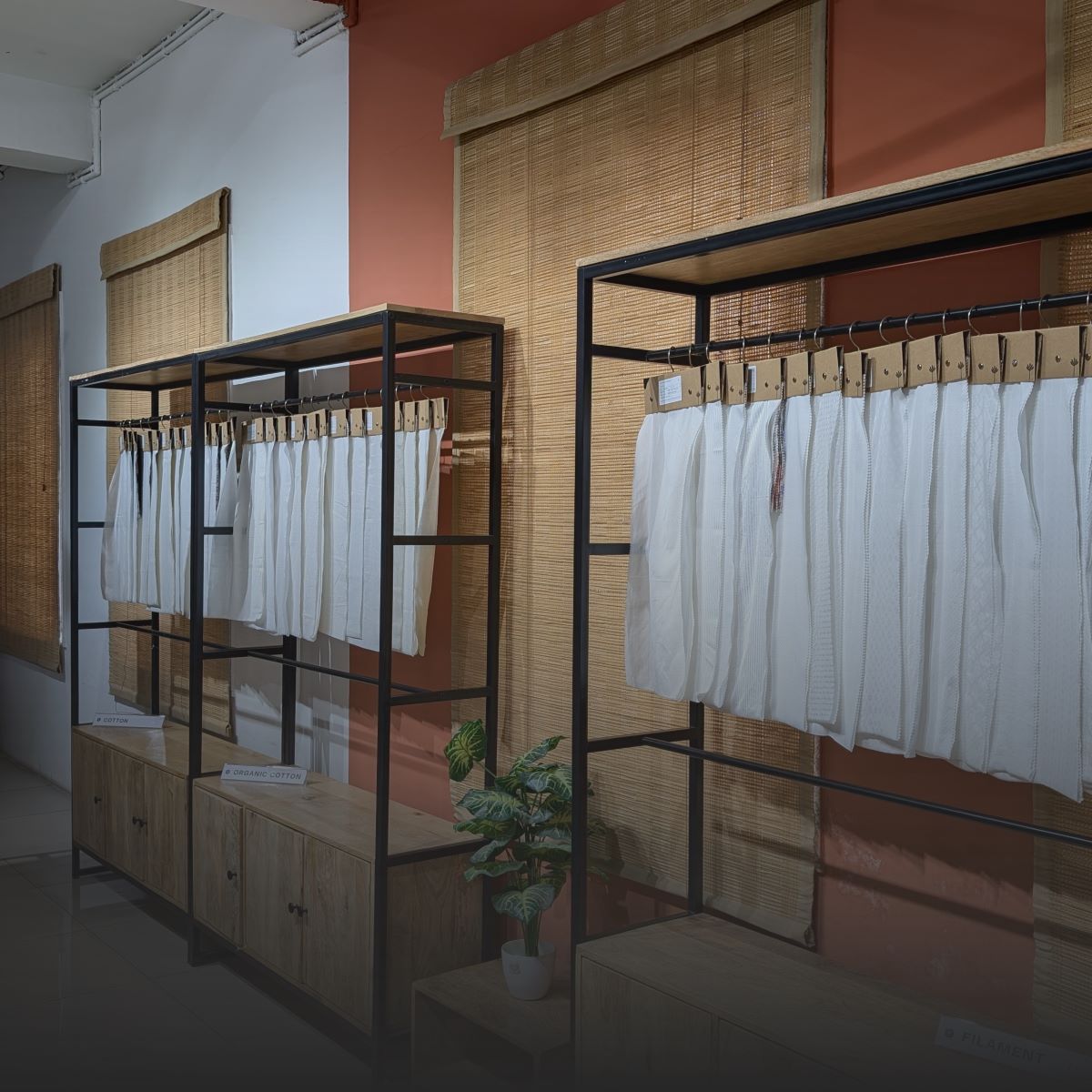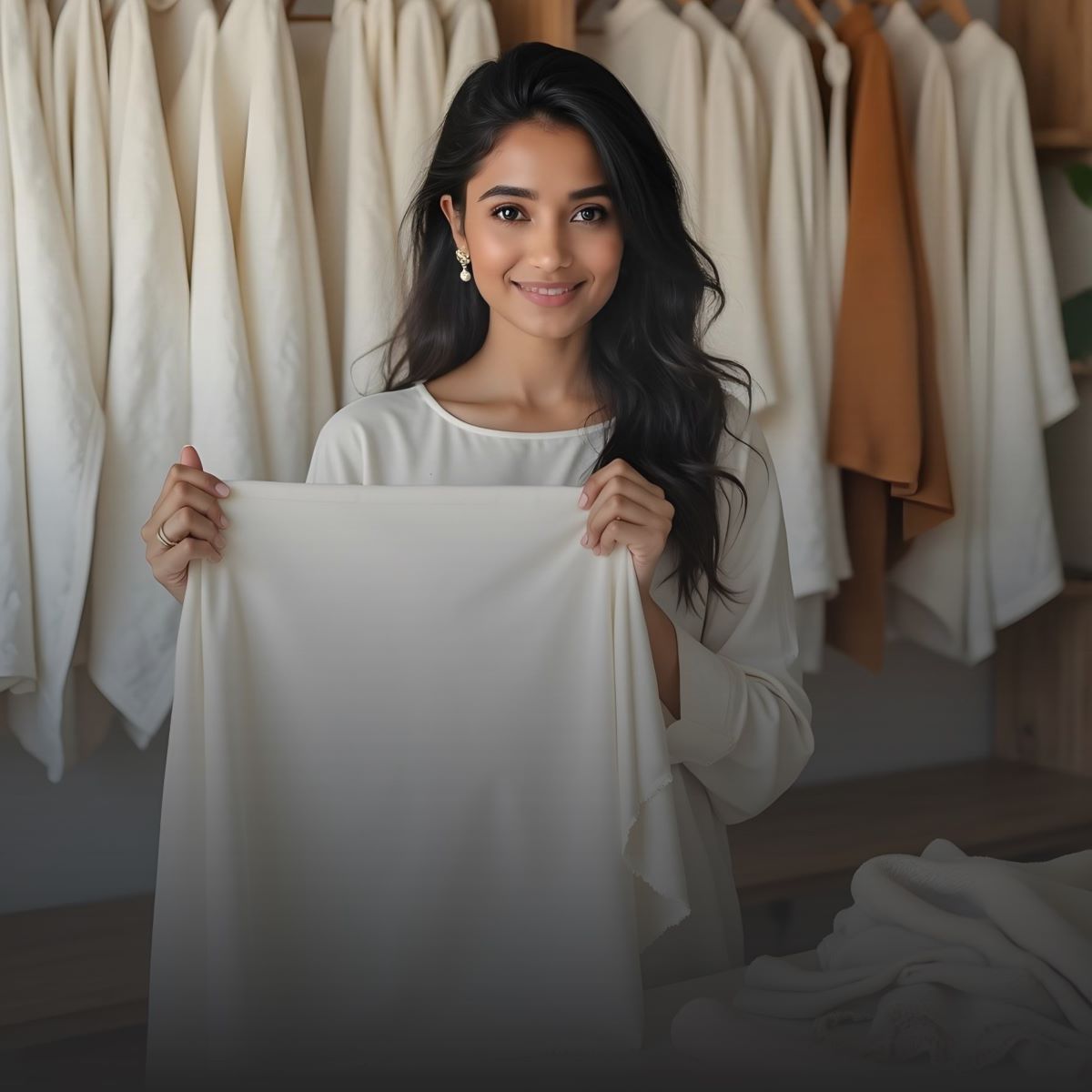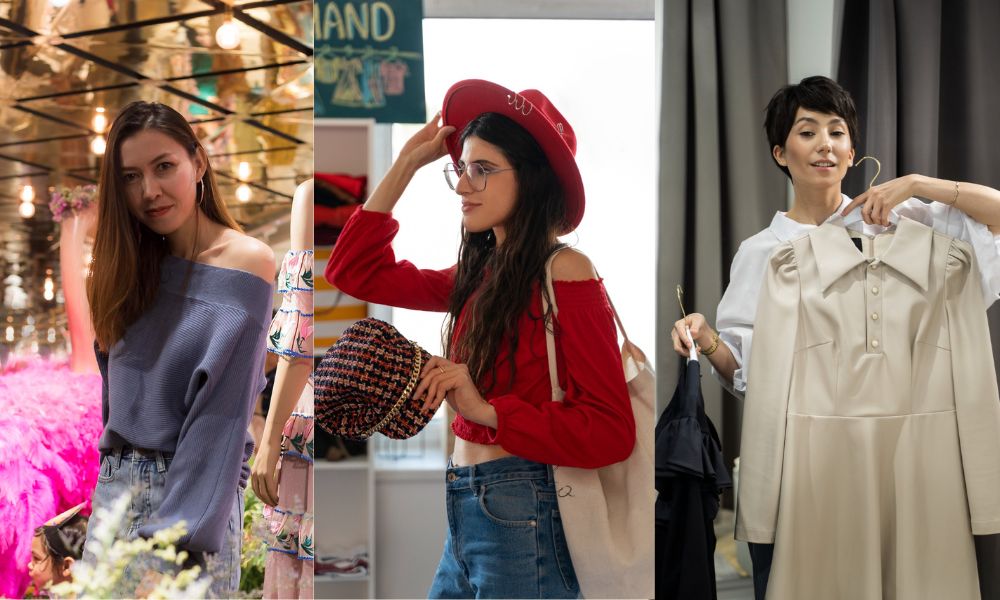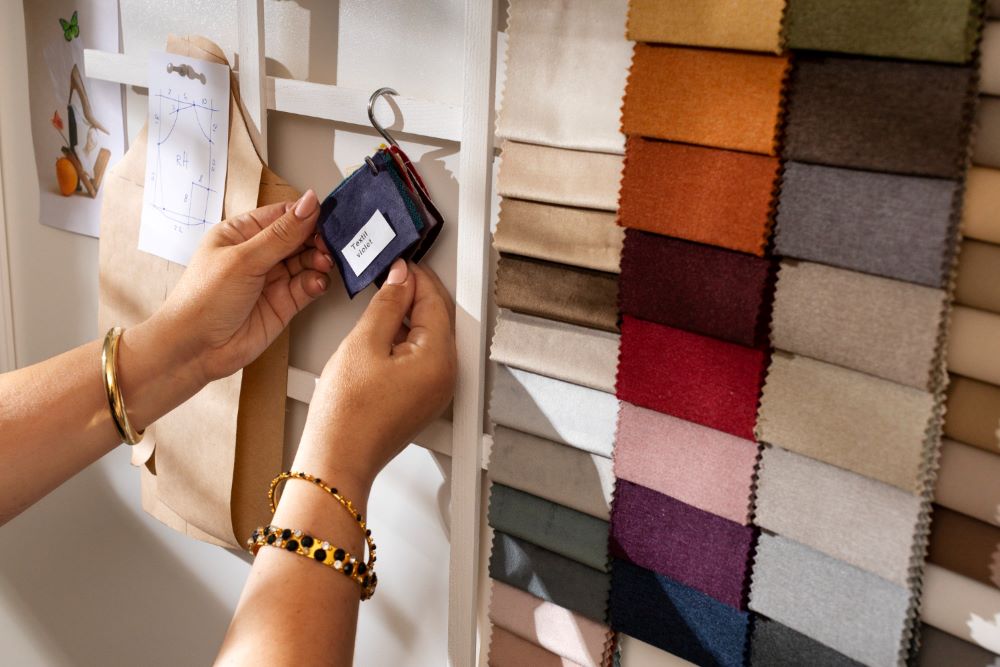People today prefer ready-made branded clothes. They look for quality, comfort and something that fits their personality and status. This is why more customers are becoming brand-conscious.
In fashion, a strong brand image helps you stand out. It shows people what your brand is about and why they should choose you. To do this well, you must understand what your customers want and how they shop.
Your brand message should be clear in your clothes, your marketing and how you connect with people. If your message reaches the right audience, it can build trust and grow your brand.
This blog will help you build a clothing brand with which customers notice, trust, and connect.
1. Define Your Brand Identity
Your brand identity is like the face of your business. It is what people see, feel and remember when they think about your brand. It is not just your logo or colors. Your brand's full personality shows who you are, what you do and why it matters.
What Is Brand Identity?
Brand identity is how your brand looks, sounds and feels to the world. It includes:
- Name
- Logo
- Colors
- Fonts
- Tagline
- Tone of voice
-
Design style or symbols
Key Elements of a Strong Brand Identity:
|
Point |
What It Means |
|
1. Meaning |
Your brand should tell your story, show your values and explain what makes you special. |
|
2. Be Different |
People should see what makes you unique. |
|
3. Be Consistent |
Everything like your website, packaging and posts should look and feel the same to build trust. |
|
4. Be Flexible |
Your brand should look good everywhere like websites, apps or printed items and still feel the same. |
|
5. Easy to Remember |
Use a logo, slogan or sound that people won’t forget, like Britannia’s ting ting ta ding. |
Why Brand Identity Matters
In a world full of choices, your brand identity is your first impression and also the one that stays with people.
It helps you:
- Grab attention
- Be remembered
- Build emotional connections
- Increase the value of your brand
- Grow customer loyalty
2. Know Your Target Audience

Every clothing brand wants a successful launch and good sales. Having lovely designs and quality fabrics is important but not enough. You need to show your products to the right people to grow your brand. That's why it's important to know who your target audience is.
Some brands skip this step because they think it will stop them from reaching more people. Knowing who you're designing for makes your brand clearer and stronger. This helps you connect better with the right customers.
How to Find Your Clothing Store's Target Audience
Start by knowing your products well. Think about:
- What makes your clothes special?
- Who will benefit from wearing them?
-
What values do your clothes bring to someone's life?
Once you're clear about your products, ask yourself the following:
-
Is your brand gender-specific or gender-neutral?
-
What is the price range of your clothes? (Affordable, mid-range or premium)
-
Which age group do you want to focus on?
-
Where does your audience live? (Weather and seasons matter)
-
What problems do your customers face in clothing? How can your brand solve them?
These questions help you understand who your ideal customers are more clearly.
Also Read: How to define your target audience for your fashion business
5 Easy Tips to Find the Right Audience:
|
Tip |
What It Means |
|
1. Know What Problems People Have |
Think about what problems people face with clothes, like bad fitting or uncomfortable fabric. If you fix these, they’ll like your brand. |
|
2. Study the Market |
Look at what’s trending, what others are doing and what’s missing. This helps you know where you fit and who to target. |
|
3. Use Tools to Learn About Visitors |
Tools like Google Analytics and Facebook Insights tell you who’s visiting your site – their age, location and interests. |
|
4. Be Active on Many Platforms |
Don’t just use one way to talk to people. Use Instagram, blogs, emails and ads to reach more types of customers. |
|
5. Make a Customer Profile |
Imagine your perfect customer. Think about their age, job, style and shopping habits. This helps you design what they’ll like. |
3. Design a Signature Collection

Creating your first fashion collection is an exciting step when starting your own clothing line. But
what really makes a brand stand out is having a signature style, something special that people instantly remember your brand for.
Why a Signature Style is Important
Here are some examples of famous brands with strong signature styles:
-
Evisu jeans are known for the hand-painted seagull on the back pockets.
-
Christian Louboutin made red soles a symbol of luxury.
-
Burberry is famous for its checkered pattern.
-
Maison Margiela leaves four white stitches visible on the back of their clothes.
-
Thom Browne adds red, white and blue stripe details to his designs.
These small details made their brands memorable. You can create something unique like this for your brand, too.
How to Create Your Signature Collection
1. Make a Moodboard
Collect pictures, fabrics, colors and ideas that inspire you. This helps you decide what your collection will look and feel like.
2. Start Sketching and Sampling
Draw your designs and turn a few of them into real clothing samples. Focus on details that can become your signature, like a special stitch, pattern or color.
3. Keep It Small but Strong
You don't need to start with a big range. A small collection of 5–10 pieces is enough to start.
4. Choose Your Signature
Your signature can be anything, like a certain cut, color combo, fabric or even your logo placement. Keep it simple, consistent and easy for people to remember.
Why Your Fashion Brand Needs a Signature Style
-
To Stand Out – It helps people notice your brand.
-
To Connect with Customers – A signature style creates an emotional bond.
-
To Build a Loyal Community – Fans of your style will keep coming back.
-
To Build Trust – Consistent style shows you care about quality and details.
-
To Increase Sales – People who love and trust your brand will buy more.
So, take your time, trust your ideas and create a collection that feels true to you. Your signature style will help your brand grow and be remembered.
4. Choose the Right Fabric and Suppliers

The fabric you choose is the base of your fashion brand. It affects how your clothes look, how they feel when worn and how long they last. This is why picking the right fabric and supplier is one of the most important steps when starting your clothing brand.
Why Fabric Matters
Fabric is like the foundation of a house. If it's not strong or right for the design, everything else can go wrong. The right fabric makes your clothes look, feel and last longer.
Picking the wrong fabric and your design might feel uncomfortable, wear out quickly or not look how you want. But with the right fabric, your brand can shine.
Types of Fabrics You Can Choose From
1. Natural Fabrics
These are made from plants or animals. They are usually soft, breathable and good for sensitive skin.
-
Cotton: Soft and breathable. Perfect for everyday clothes like T-shirts and casual dresses.
-
Wool: Warm and great for winter clothing like sweaters and coats.
-
Silk: Smooth and shiny. A great choice for luxury and party wear.
-
Linen: Light and airy. Best for hot weather and summer styles.
2. Synthetic Fabrics
These are artificial using chemicals. They are strong, stretchy and often more affordable.
-
Polyester: Tough and wrinkle-free. Good for sportswear, uniforms and low-cost clothing.
-
Nylon: Quick-drying and durable. Ideal for swimwear and gym wear.
3. Blended Fabrics
These are a mix of natural and synthetic fibers. You get both benefits, like softness and strength, in one fabric.
Some Fabric Terms You Should Know:
|
Word |
What It Means |
|
GSM |
This shows how heavy the fabric is. Higher GSM means the fabric is thicker. |
|
Drape |
This is how the fabric falls. Silk falls softly; denim stays stiff. |
|
Weave |
This is how the threads are stitched together. The tight weave is strong; the loose weave is light. |
How to Choose the Right Fabric
1. What is the Garment For?
Think about the purpose of the clothing.
-
Everyday wear: Go for cotton or linen.
-
Party wear: Try silk, satin or georgette.
-
Office wear: Wool and linen work well.
-
Activewear: Use stretchy fabrics like spandex and polyester.
2. What Season Will It Be Worn In?
-
Summer: Choose light and airy fabrics like cotton and linen.
-
Winter: Pick warm fabrics like wool or fleece.
3. Who Will Wear It?
Understand your target customers.
-
Use luxurious fabrics like silk or organic cotton if your brand is high-end.
-
If it's affordable fashion, use blends or polyester.
-
For kids, choose soft and durable fabrics.
- Working adults should go for easy-care and stylish fabrics.
4. Think About Sustainability
More people today want eco-friendly clothing. Use fabrics like organic cotton, recycled polyester or bamboo to reduce your brand's environmental impact.
5. Build an Online and Offline Presence

To grow your fashion brand, you must be seen online and in the real world. A strong presence in both places helps people remember and trust your brand.
Make a Website
Start by creating a professional website.
-
If you sell clothes, set up an online store.
-
If you want to show your work, make a portfolio site.
Keep it updated with new designs, offers and your story. A good website is the first step to building your fashion brand online.
Use Social Media
Social media is great for fashion brand marketing. Use platforms like:
-
Instagram for showing your products and behind-the-scenes content
-
Pinterest for mood boards and style inspiration
-
LinkedIn to connect with other fashion professionals
Be Consistent Everywhere
Your brand should look and feel the same online and offline.
Use the same logo, colors and tone across your website, social media, packaging and events. This builds trust and makes your brand easy to recognize.
Show Up in the Real World
Don't just stay online. Meet people in person, too.
- Join fashion exhibitions and pop-up events
- Partner with stores to display or sell your clothes
- Talk about your brand and connect with local customers
This helps you grow your offline presence and build relationships.
Also Read: How to Increase Online Presence of Your Private Label?
6. Focus on Branding and Packaging

Make certain that your brand is visually appealing and straightforward at all times. It begins with an elegant logo, garnet brand colour and legible fonts, along with other qualities that assist the audience to recall your clothing brand.
Put your brand name on your tags, labels and even the packaging. Consider using these materials to show your commitment to environmental sustainability.
7. Set Up Production and Logistics

Now that your designs are ready, it's time to make your clothes and plan how to deliver them to your customers.
Choose how to make your clothes
You can make the clothes yourself or get a manufacturer to make them. If you make them, you have more control. If you hire someone, it saves you time and work.
Check quality
Ensure every piece is made well and check the stitching, fabric and fitting. Good quality keeps customers happy.
Plan how to send your clothes
Decide how you will store and ship your products. You can send them from your home, a warehouse or directly from your manufacturer.
Keep track of your stock
Use a notebook or simple software to know how many clothes you have. This helps you avoid running out or having too much.
Why this is important:
If your production and delivery run smoothly, your customers will get their orders on time and be happy with what they receive.
8. Develop a Marketing Strategy

Work with influencers
Ask fashion influencers to wear and promote your clothes on social media.
Post reels and styling videos
Share short videos showing how to wear your outfits in different ways.
Use ads and SEO
Run paid ads on Instagram, Facebook or Google and use the right keywords so your website appears in Google searches (like "fashion marketing strategy" or "clothing brand promotion").
Why it's important
Marketing helps more people find your brand and buy from you.
9. Monitor, Adapt and Scale

Keep track of what's working
Check your sales, website visits and social media likes to see how your brand is doing.
Listen to your customers
Ask people what they like or don't like and use their ideas to make things better.
Grow your business
Plan new product launches, team up with other brands or start shipping to other countries.
Why it matters
This helps your brand grow, reach more people and become more successful.
Conclusion
Starting your clothing brand may seem complicated, but following the proper steps can make it happen. Each step matters, from planning your idea, creating designs, finding the right fabrics and promoting your brand.
Keep being creative, listen to your customers and always try to improve. No matter what kind of clothes you want to make, your hard work and passion will help your brand grow.
We also happen to be a magnet for suggestions, and would love to catch yours….throw us yours on hello@fabriclore.com





